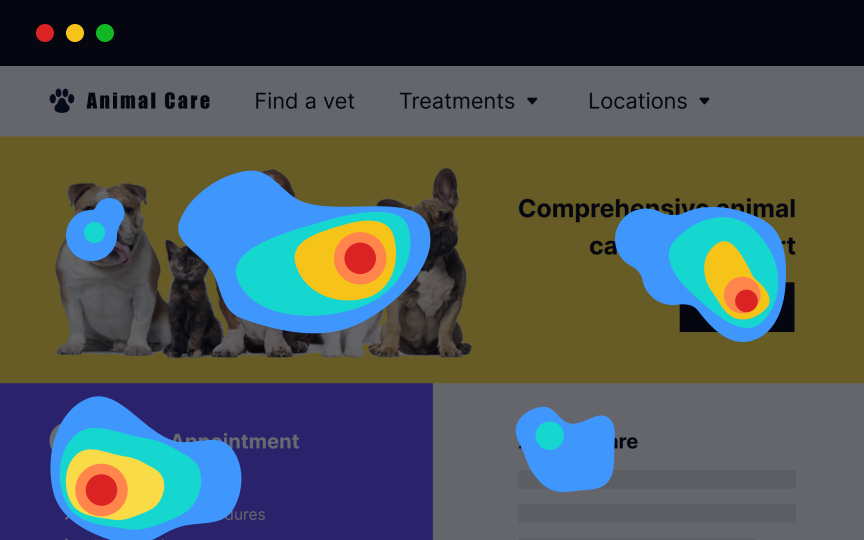Eye tracking
Eye tracking is a costly quantitative user research method that requires special equipment to track users' eyes while they're scanning an interface. Its goal is to detect which elements of the page attract people's attention and which stay unnoticed.
Aside from the high equipment price, one of the key disadvantages of this method is that researchers often ask users to think aloud while navigating a page. It may lead to dangerous misinterpretations. Users may spend more time on a page explaining what they see and look at some content longer than they would in real life because of the think-aloud task. As a result, a heatmap won't reflect an accurate picture. The NN Group recommends analyzing each participant's session replays to better understand user behavior.[1]
Several factors can affect an eye-tracking study as it requires users to:
- Sit relatively straight in the chair
- Not fidget or move too much
- Not drink from a cup
- Not lean back or forward in a chair
- Not wear glasses
Taking such measures will help you obtain accurate eye tracking results but won't provide insight into real-world user behavior.
Pro Tip: Consider eye tracking studies only after you’ve conducted a series of regular usability tests and need to dig deeper.
References
- How to Conduct Eyetracking Studies | Nielsen Norman Group Report | Nielsen Norman Group


